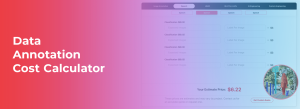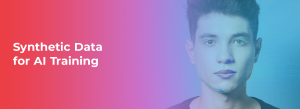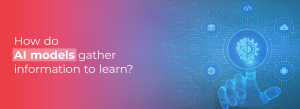How to Choose the Right Image Data Labeling Services
Every machine learning project is important from its base, image data labeling and it will be the major blind spot of the system if this step is overlooked. AI model’s quality can only match the data’ quality provided for training. The automotive industry and facial recognition system applications can be powered by this action. For startups, data scientists, and AI developers, understanding the nuances of image data labeling services is critical. This can make all the difference between an underperforming system and a state-of-the-art solution.
If you’re looking to improve your AI models with accurately labeled data, this guide walks you through everything you need to know about image data labeling services, including the challenges, benefits, and emerging trends.
What Is Image Data Labeling and Why Is It Important?
The practice of analyzing video data, images, or photographs through tagging is called Image data labeling. This type of image recognition often helps AI (artificial intelligence) and ML (machine Learning) models to interpret and understand visual inputs.
For example, training a self-driving car’s system means providing it with labeled datasets with bounding boxes around pedestrians and traffic signs.
Data labeling allows for proper governance streamlining and boosting the accuracy, performance and reliability of AI and machine models. Without it, even the most advanced models can stumble. That’s why partnering with experienced providers like Macgence—experts in training AI/ML models—can save time and help you achieve groundbreaking results.
Types of Image Data Labeling
Image data labeling isn’t a one-size-fits-all solution. Different projects demand different annotation techniques. Here’s a quick overview of the most common types and their use cases:
1. Bounding Box Annotation
- What it is: Encloses objects in rectangular boxes to identify their location.
- Use cases: Common in object detection tasks for e-commerce (identifying product images) or autonomous vehicles (detecting cars, pedestrians).
2. Semantic Segmentation
- What it is: Labels every pixel in an image to classify objects and their background.
- Use cases: Perfect for tasks requiring detailed precision, such as medical imaging or smart city projects.
3. Polygon Annotation
- What it is: Focuses on defining object boundaries with precision by creating irregular polygons.
- Use cases: Ideal for tasks involving irregularly shaped objects, like drones identifying rooftops or crops.
4. 3D Point Cloud Annotation
- What it is: Annotates images in three dimensions, based on depth and spatial data.
- Use cases: Essential for LiDAR systems used in autonomous vehicles.
5. Keypoint Annotation
- What it is: Highlights specific points of interest in an image, such as human joints or facial landmarks.
- Use cases: Popular in motion analysis or facial recognition applications.
With Macgence’s labeling experts and extensive experience in AI/ML, you can access tailored annotation services for any of these techniques.
Why Outsource Image Data Labeling?

Outsourcing your image data labeling services offers myriad advantages, especially for resource-strapped startups or scaling enterprises.
1. Cost and Time Savings
Training an in-house labeling team takes time, money, and effort. By outsourcing your annotation to professionals, you eliminate the need to build and train an internal team—saving you resources and helping you scale faster.
2. Access to a Global Workforce
A reliable data-labeling partner like Macgence offers access to skilled annotators from around the globe. They bring expertise across different industries, ensuring high-quality results.
3. Guaranteed Accuracy
Professional teams are equipped with tools, quality control processes, and technology to ensure accurate annotations tailored to your project goals.
4. Scalability
AI projects often experience fluctuating data volumes. Outsourcing lets you scale up or down based on your needs without interrupting workflows.
Challenges in Image Data Labeling
Despite its importance, image data labeling comes with several challenges worth noting:
1. Quality Assurance
Maintaining consistent quality in high-volume data labeling is no small feat. Errors in labeled data can result in inaccurate AI model predictions.
2. Managing Large Volumes of Data
When dealing with thousands (or even millions) of images, efficient workflows and strong organizational capabilities are critical.
3. Ensuring Timely Delivery
Deadlines can be tight in AI development. A lack of project management expertise can lead to costly delays.
Macgence addresses these challenges with a robust quality assurance process, efficient project management, and scalable solutions for businesses of any size.
How to Choose the Right Data Labeling Service Provider
When choosing a data labeling partner, consider these key criteria to ensure your projects succeed:
1. Accuracy and Quality
Look for a team with proven processes in place to deliver consistently accurate labeling.
2. Turnaround Time
Ensure they can handle your project volume within the required deadlines.
3. Scalability
Opt for providers capable of adapting to your changing needs and project growth.
4. Technology and Expertise
A trusted provider should have expertise in diverse labeling techniques and tools.
At Macgence, we’ve helped AI developers and enterprises around the world achieve outstanding results through our focus on quality, flexibility, and expertise.
The Future of Image Data Labeling
The data-labeling industry is evolving rapidly, keeping pace with the growing demand for accurate AI models. Here are a few trends shaping the future:
1. Automation in Labeling Tools
AI-assisted platforms are emerging to support annotators, improving efficiency and accuracy.
2. Synthetic Data
AI developers are investing in synthetic datasets to fill data gaps without manual annotation.
3. Domain-Specific Specialization
With AI making deeper inroads into industries like healthcare, agriculture, and retail, data labeling providers are specializing in domain-specific solutions.
Macgence continues investing in cutting-edge tools and exploring innovations that enhance the quality and efficiency of our services for clients.
Key Points and Future Actions
Accurate labeling image data is of utmost importance for the build-up of advanced AI systems that easily outperform the competitors. For both Start-Ups and Enterprises, outsourcing can prove to be revolutionary due to cost advantages, greater accuracy, and exceptional scalability.
For those who want to elevate their AIs, feel free to reach out to Macgence—for now, contact us to learn how our services can bring value to your business.
Most importantly, remember to share this post with others!
Frequently Asked Questions
Ans: – Industries like healthcare, automotive, e-commerce, agriculture, and security leverage image data labeling for AI applications like medical diagnosis, autonomous driving, and product recommendation systems.
Ans: – Yes! Properly labeled datasets ensure your AI model has high-quality training data, leading to better predictions and improved outcomes.
Ans: – Macgence stands out for its focus on accuracy, flexible scalability, and access to a highly skilled global team with expertise across industries.
You Might Like
May 2, 2025
Data Annotation Cost Calculator for AI Projects
AI and machine learning projects thrive on one essential element: data. However, not all data is as useful as raw, unstructured forms. For algorithms to understand and learn, they need labeled data. This is where data annotation comes in—a foundational step in training AI/ML models to perform tasks like image recognition, natural language processing, and […]
April 28, 2025
Is Synthetic Data the Future of AI Training?
Data is very important in the field of artificial intelligence (AI), but there’s a little catch. As we know, large volumes of high-quality data are necessary for AI models to learn, yet real-world data is, to a great extent, expensive, hard to obtain, and even sensitive because of privacy issues. For researchers and developers who […]
April 23, 2025
How do AI models gather information to learn
Popular AI models perform better than humans in many data science activities, such as analysis, artificial intelligence models are made to emulate human behavior. Artificial neural networks and machine learning algorithms are used by AI models, such as large language models that can comprehend and produce human language, to simulate a logical decision-making process utilising […]


 Previous Blog
Previous Blog




